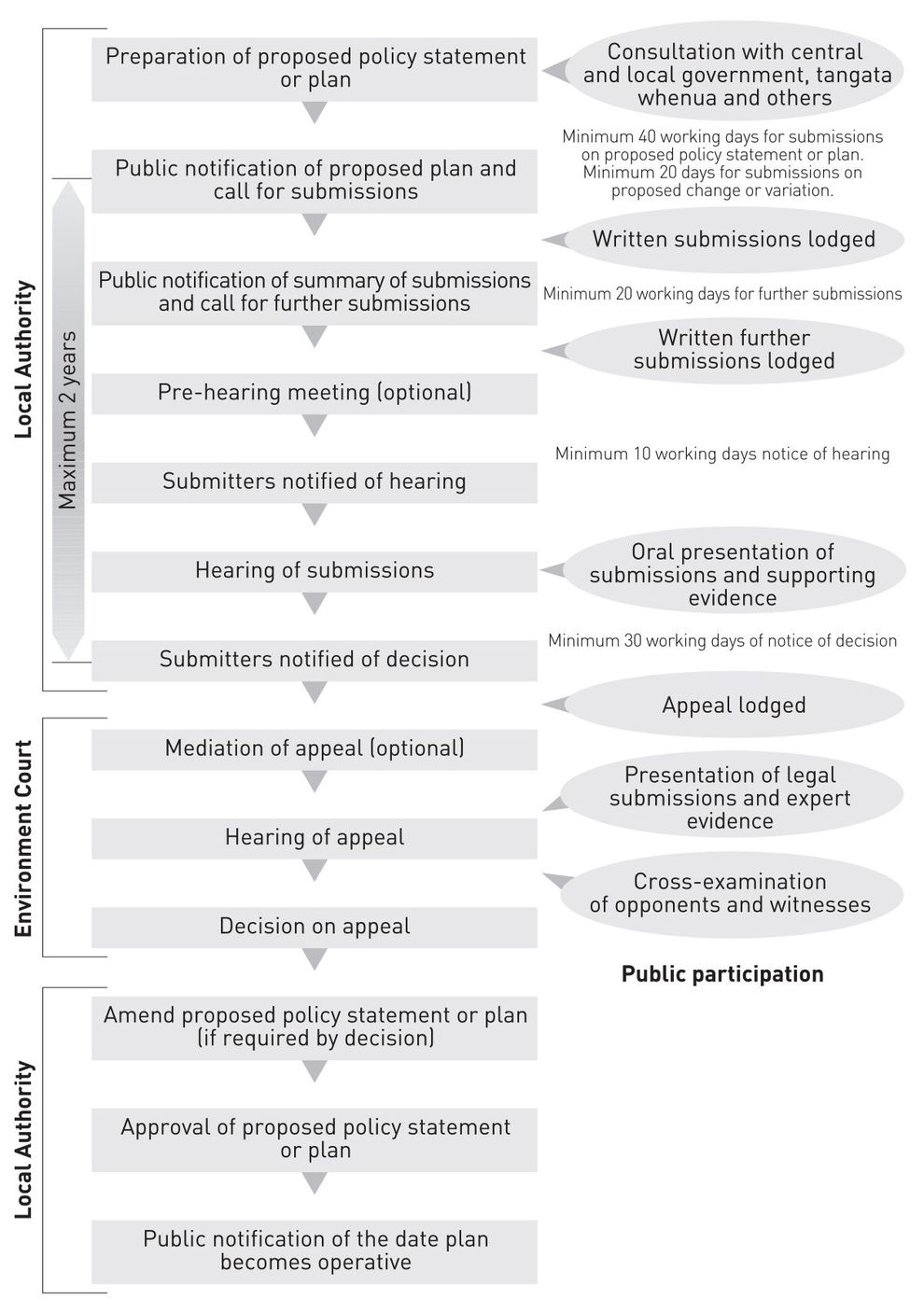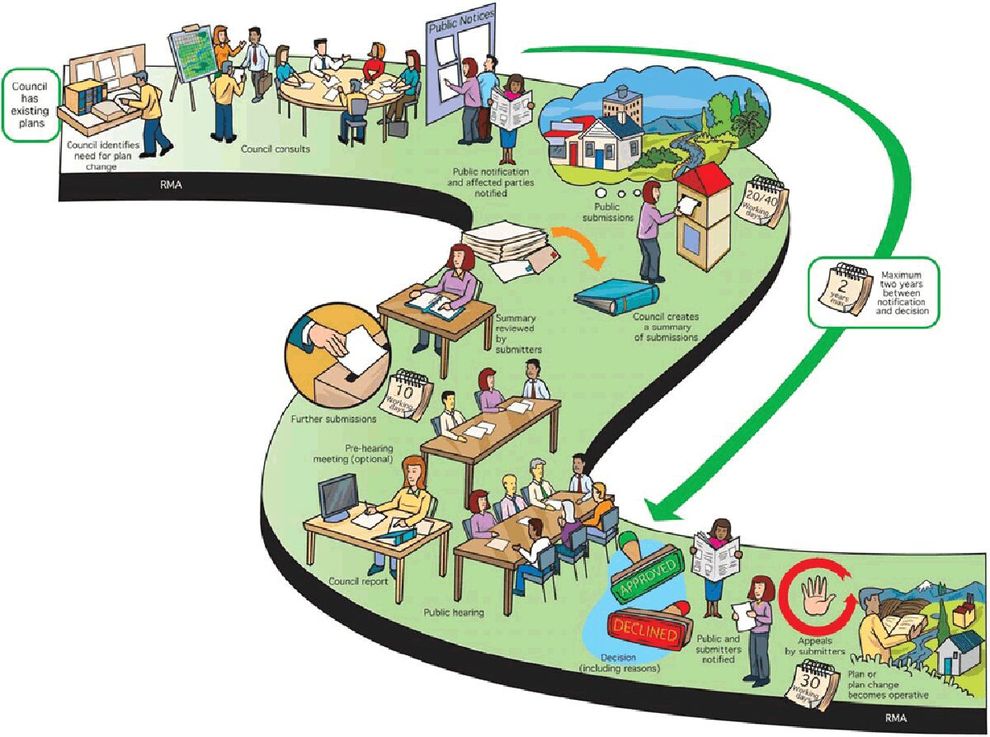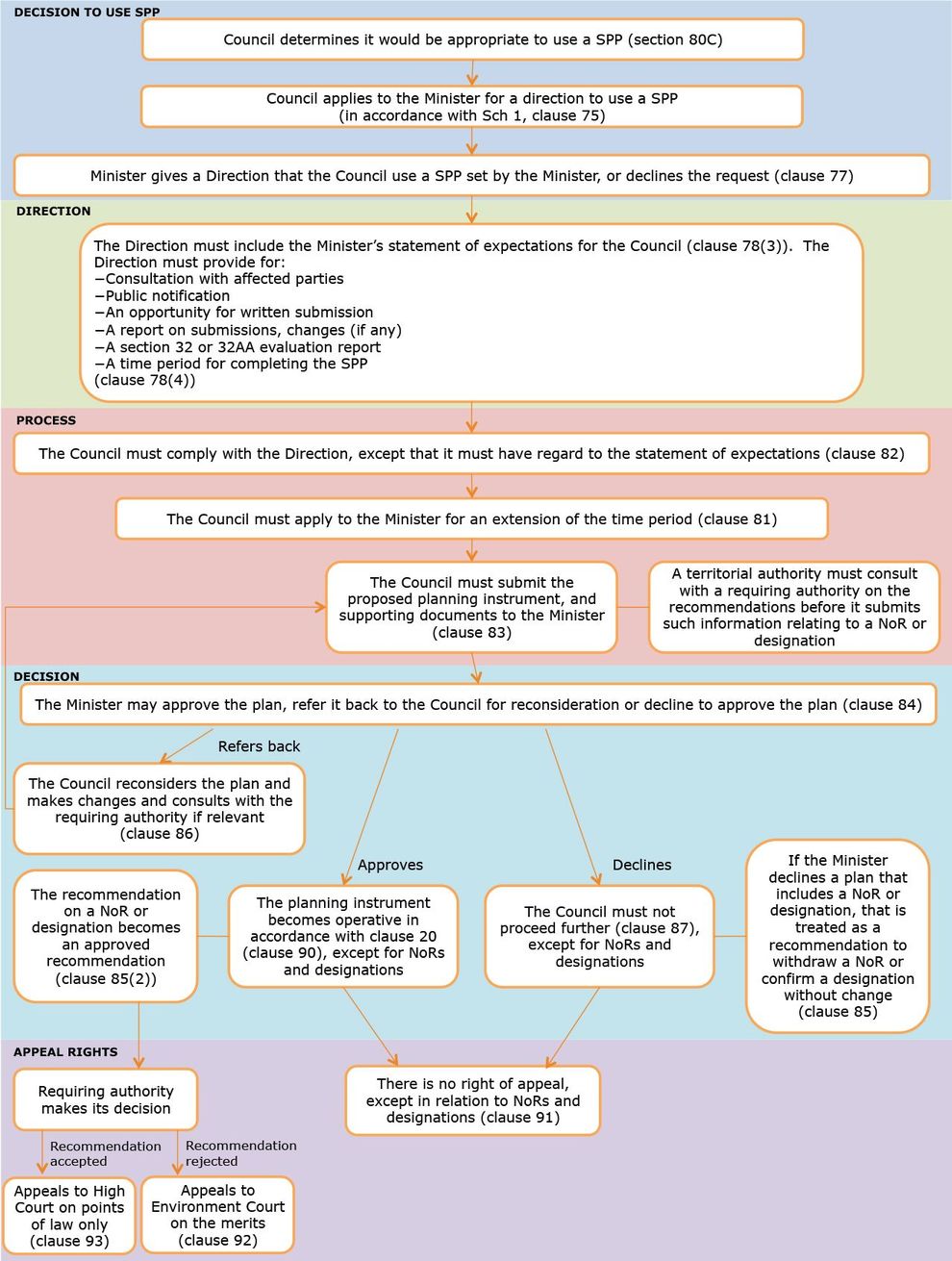Plan Making
Processes
There are four processes for developing regional policy statements, regional plans and district plans under the Resource Management Act:
- The standard "Schedule 1" process;
- The limited notification process, which is a variation of the standard Schedule 1 process;
- The streamlined process; and
- The collaborative process.
Terminology
A “plan change” is the process that councils use to prepare changes to an operative policy statement or plan.
A “variation” is a change prepared by a council to a proposed policy statement or plan change.
A “proposed policy statement” or “proposed plan” is a policy statement or plan which has been notified but has not become operative.
The standard Schedule 1 process
Regional policy statements, regional plans and district plans may all be changed using the process set out in Schedule 1 of the Resource Management Act as illustrated in the two diagrams below. b9dc013a-74f5-4567-965e-1fac64673722 Note – In addition to the steps illustrated below the Minister of Conservation must approve each regional coastal plan. 863ad774-e7fd-4c4e-b81a-371580a9a991


The limited notification process
The limited notification process may be used for a proposed change or variation where there is an identifiable group of persons “directly affected” by the proposed change or variation. It follows the standard Schedule 1 process, except that full public notification is not required. Only those persons identified as being directly affected by the proposed change or variation and the relevant Ministers, local authorities, and iwi authorities are notified, have the right to lodge submissions, participate in a hearing, and lodge an appeal on the decision. 87ba9345-9b5f-47b5-b2f2-3b3b4251a466
The streamlined process
Councils may make a request to the Minister to use a streamlined planning process for a proposed policy statement, plan, plan change or variation.The process must be "proportional to the issues being addressed" and is intended to provide greater flexibility in planning processes and timeframes and allow these to be tailored to specific issues and circumstances. The following diagram summarises the streamlined process.

The collaborative process
Councils may adopt a collaborative planning process as an alternative planning track when undertaking a review or change, or preparing a new plan or policy statement, including a combined regional and district document. The collaborative planning process is intended to provide a process for the community to participate at the front end of the planning process where alternatives, costs and benefits of various options can be debated for informed decision-making, to produce plans that better reflect community values and reduce litigation costs and lengthy delays later.
The following diagram summarises the collaborative process.

-
Part 1, Schedule 1, RMA
-
Clause 19, Schedule 1, RMA
-
Clauses 5A, Schedule 1, RMA
Last updated at 1:30PM on March 21, 2018